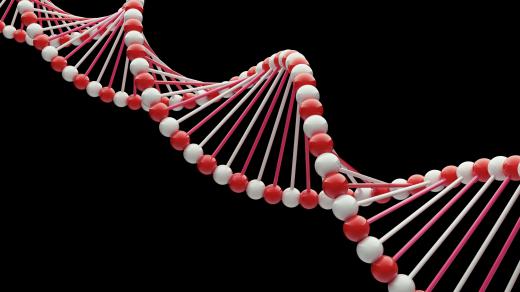What is Reverse Genetics?
 Mary McMahon
Mary McMahon
Reverse genetics is an approach to genetics research which takes an unknown genetic sequence and attempts to figure out the phenotype with which it is associated. This is in contrast with classical genetics, in which researchers take a known phenotype, such as stripes on a cat, and try to determine which gene or genes cause the phenotype to appear. These two different approaches are both in widespread use, and contribute to a greater overall understanding of the genome of many organisms.
As gene sequencing became faster and easier, researchers began to be faced with a wealth of material they knew nothing about. They could detect clear genetic sequences, but they had no idea what these sequences did or didn't do. As a result, reverse genetics began to be used to explore these unknown areas of the genome to learn more about their function. Given the length of the genome in some organisms, there will be ample material to explore for many generations of researchers.

In reverse genetics, a researcher takes an unknown genetic sequence and manipulates it to see how it changes the phenotype. Researchers can introduce mutations, deletions, additions, or other changes to the sequence which should change the way in which it expresses. They can also turn genetic sequences off and on. By observing changes caused by the manipulation, a researcher can draw conclusions about the function of the sequence in the body.

One could think of reverse genetics as a sort of black box area of research. In this case, the genetic sequence is inside the black box, with the function being hidden from the researcher. The researcher sticks a metaphorical hand into the box to manipulate the contents, and then sees how the manipulation changes the output of the box. Using reverse genetics, people can figure out the function of specific sequences and areas of the genome.

One area in which reverse genetics is used is in the development of vaccines, with researchers taking new viruses and exploring their genetic codes to find the right segments to introduce to a vaccine for the purpose of protecting people. Reverse genetics can sometimes turn up remarkable surprises, because researchers don't necessarily know what their manipulations will accomplish. They may discover links to genetic conditions, find out that the expression of a trait is more complicated than previously believed, or find new approaches to medical treatment through a deeper understanding of the function of the genome.
AS FEATURED ON:
AS FEATURED ON:













Discussion Comments
Movies -- and narrative fiction in general -- often offer insights on what might happen in the future: they propose a possible outcome. In the case of genetic manipulation, the fact that excessive manipulation might lead to large scale negative consequence is a plausible one, since manipulation is definitely on the increase, and since the biological system is far too complex for definite predictions to be made one way or the other.
What should keep one on guard is the intrusive nature of genetic manipulation. By its nature, manipulation requires the creation of an organism, or a part of one, often sentient, which is often guaranteed to experience life through a type of pain we can barely imagine.
Maybe it is unavoidable for present research to use these brute force methods. To question the practice, however, is very far from being the idle activity of someone who watches too many movies.
One simple insight arising from this type of questioning concerns language: talking about "fighting viruses" sends the wrong message. Viruses and bacteria are always here with us, since apparently they co-evolved with us. Our mouths alone seem to host a hundred different *species* of bacteria.
This means that when one of these entities turns against us, that has to do with our habits, and in general our society, just as much as it has to do with their genetic makeup. Therefore, avoiding the undesirable effects of a virus is not so much about fighting it, as it is about understanding the signal that it is sending us.
Being critical of the intrusive practices of genetics can be a positive way to understand this important concept better.
@letshearit - I really think you have been watching too many movies. This isn't the movie I Am Legend and our reverse genetics aren’t going to cause some terrible zombie outbreak or unstoppable mutated super plague.
The reason we have so many cures to all of the strains of viruses is because scientists are using reverse genetics to help us. Nature is the true master of manipulating genes, and scientists are just trying to keep up with what Mother Nature has intended. Viruses, like any other creature, adapt to survive. Viruses are indeed responding to our medicines, but unfortunately, they are just staying one step ahead of us and we need to keep fighting to survive for our own sake.
Reverse genetics has always struck me as one of the more dangerous scientific endeavors of our time. While there can be some benefits, especially when looking into new viruses, I honestly believe that manipulating the genes can cause some very unpleasant mutations.
There are so many super bugs floating around these days that it seems that no matter what we do we just can’t catch up to how fast they are mutating. While I know some of this has to do with our obsession with "cleanliness" I think that a few of the mutated strains are probably our own doing.
Post your comments